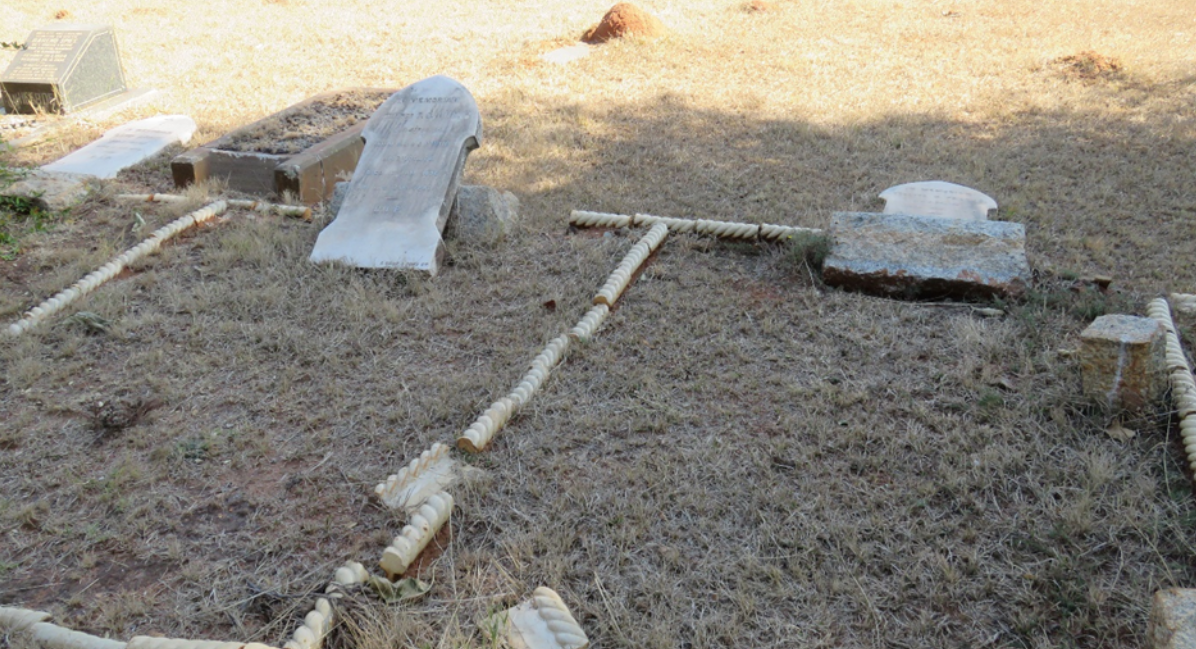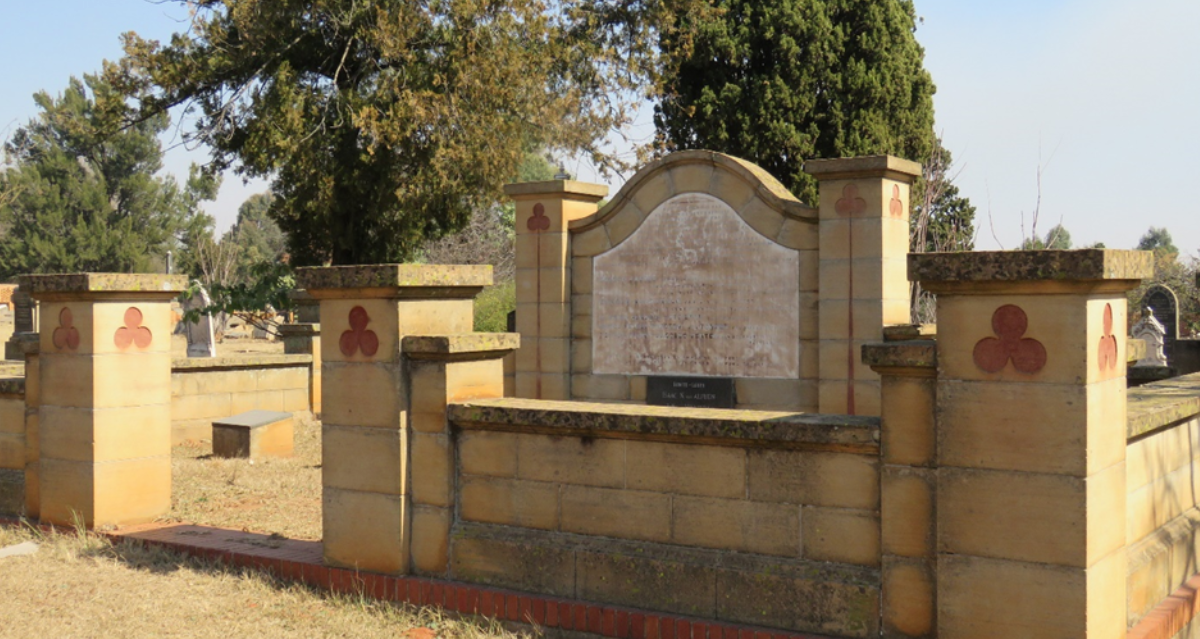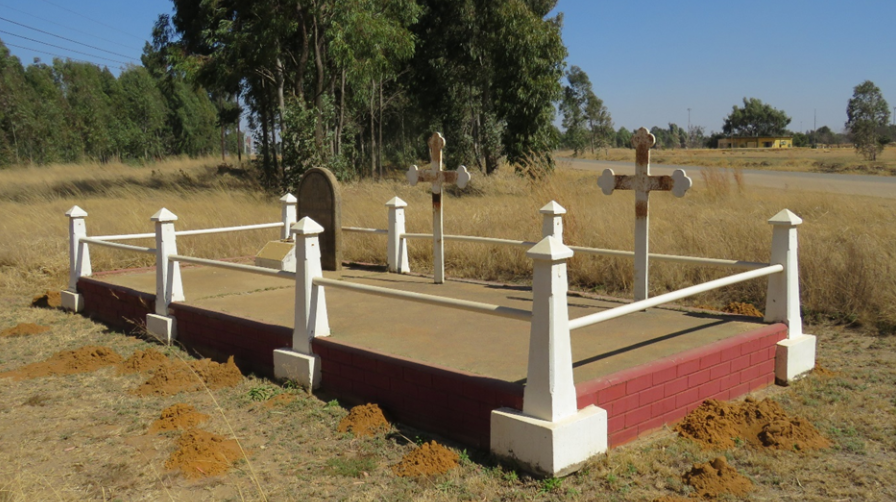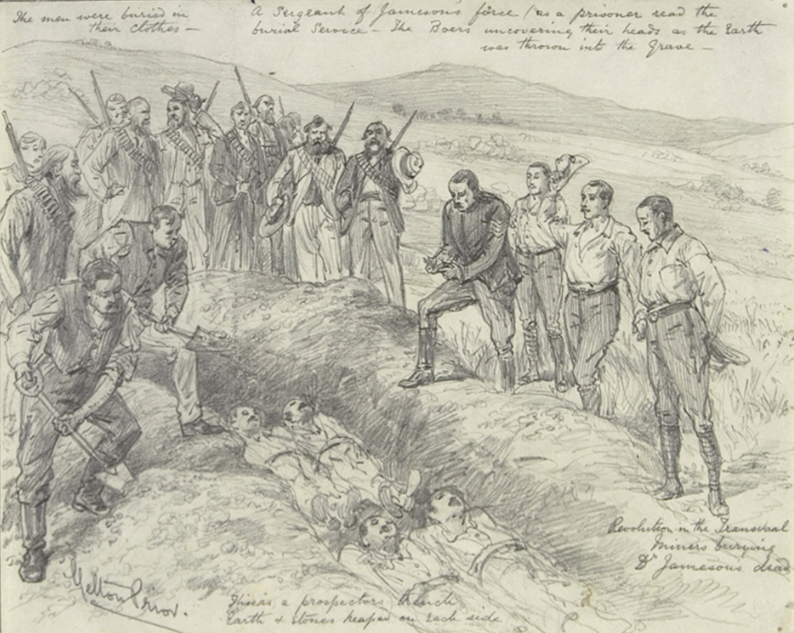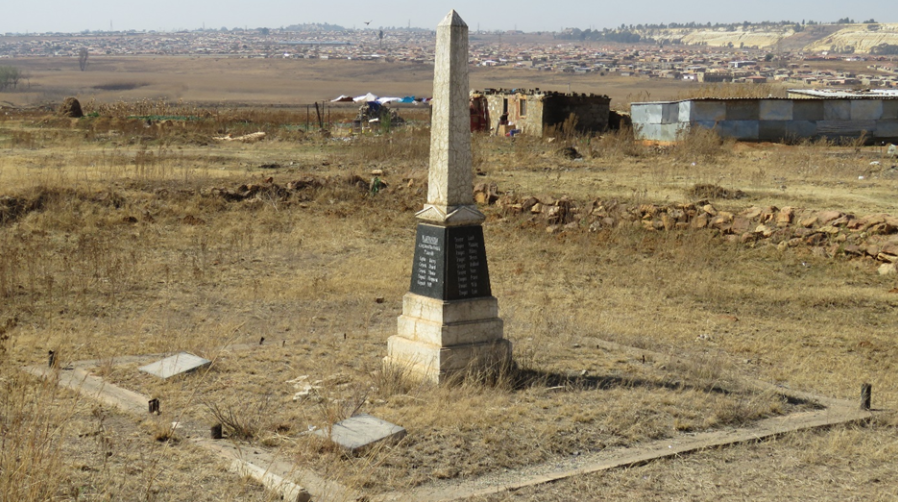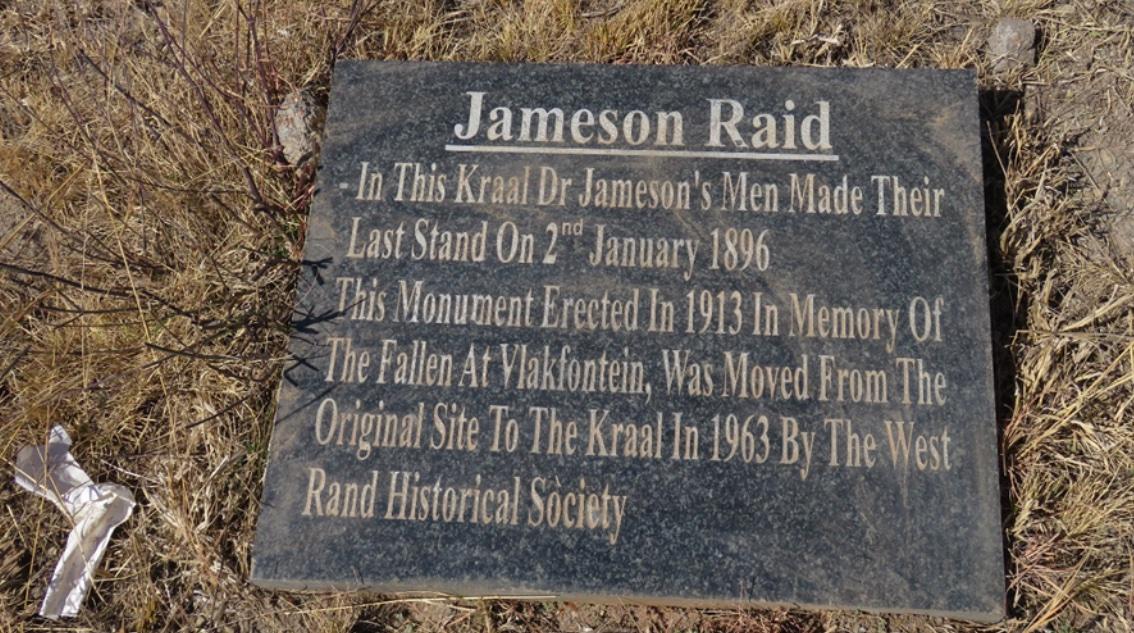
Disclaimer: Any views expressed by individuals and organisations are their own and do not in any way represent the views of The Heritage Portal. If you find any mistakes or historical inaccuracies, please contact the editor.
Even in the age of imperial chicanery, the audacity of the Jameson Raid was astounding. Imagine, two sizeable groups of well-armed mounted men, departing from Pitsane in present-day Botswana and Mafeking (now Mahikeng), respectively, at sunset on 29 December 1895, for a three-day canter to Johannesburg to overthrow Kruger’s government and proclaim it a colony of the British Empire.
Perhaps the closest modern counterpart is the so-called ‘Wonga Coup’ of 2004, to replace the President of Equatorial Guinea with an exiled opposition leader in return for preferential oil rights to corporations affiliated with those involved in the coup.
Ever since that death-or-glory ride, the fate of several of those men of the Mashonaland Mounted and the Bechuanaland Border Police units, who comprised the Jameson Raiders, have been lost in the fog of history and war. This article investigates where those bold policemen who were killed in clashes with the Boer burghers were buried.
By the mid 1890’s it was obvious that in the area immediately south of Johannesburg the world’s richest and greatest gold reefs ever, have been discovered. To the chagrin of Cecil John Rhodes, it also became clear that the extensive gold reefs he and other investors had hoped to find north of the Limpopo River, did not exist.
To Rhodes and other like-minded Randlords, it was intolerable that an ignorant and corrupt Boer government should rule the country where all this immense underground wealth existed. Gradually plans were laid to seize, if not the whole of the ZAR, then at least the area comprising the Witwatersrand goldfields.
With the covert backing of the British Colonial Secretary, Joseph Chamberlain, Rhodes and leaders of the Johannesburg Reform Committee, set in motion plans for an armed uprising of the Uitlanders in Johannesburg against Boer corruption and misrule. This would provide Dr Leander Starr Jameson, then Administrator of Mashonaland and Matabeleland with the pretext to invade the Transvaal, ostensibly to rescue the Uitlanders from the tyranny of Kruger and his government.
In October 1895, the High Commissioner in the Cape Colony proclaimed a strip of land within the Bechuanaland Protectorate along the border with the Transvaal as British South Africa Company (hereinafter Company) territory.
A contingent of 14 officers and 356 other ranks of the Mashonaland Mounted Police (MMP) were stationed at the village of Pitsane, supposedly to protect the railway against marauding African Chiefs. But the real purpose of granting the Company administrative control of this strip of land was to provide a springboard for the Raid on Johannesburg, since Matabeleland would have been too distant.
A smaller unit of the Bechuanaland Border Police (BBP) was stationed at Mafeking and when these two groups gathered at Malmani (now Ottoshoop), Jameson’s combined force totaled 511 mounted men, plus about 150 unarmed ‘Native’ drivers and leaders, etc. The column was considerably strengthened by the addition of one 12½ pounder and two 7 pounder cannons as well as eight maxim machine guns. Ammunition and baggage were transported on eight Scotch carts and three Cape carts. The two accompanying wagons sent ahead with fodder for the horses and mules would later become very useful for conveying the wounded.
Since there were no roads directly linking Mafeking with Johannesburg, a string of five galvanized iron sheds had been set up at roughly 50-kilometre intervals along the wagon spoor, or track between the border and Krugersdorp. Seemingly established for a proposed mail coach service to Mafeking, they were stocked with bully beef, biscuits and fodder for 600 men and their mounts, without arousing the suspicion of the Boers.
By 29 December 1895, the impatient Jameson was no longer willing to await the long-awaited cry for help from the Johannesburg Reform Committee, and he ordered the Raiders to depart for the Rand the following evening.
Both the Pitsane and Mafikeng Police contingents severed the nearby telegraph lines before departing at sunset on Sunday 30 December 1895. One version, possibly apocryphal, is that some intoxicated troopers cut a wire fence instead of the telegraph line. More likely, when the two units met in Malmani the following morning, the alarmed telegraphist realizing that this was an armed invasion, hurriedly wired Pretoria, before this line too was cut.
Ignoring repeated instructions from the British High Commissioner, the Reform Committee, and the Boers, to desist from invading the Transvaal, the single-minded Jameson and his senior officers, defiantly pushed ahead.
Today, one can trace the route of the Raiders across the North West Province by drawing a line on a map from Ottoshoop to Boons and from there to the western approaches to Krugersdorp. Many years ago, I heard some older people referring to the road from Boons to Krugersdorp as ‘the Jameson Road’. The little village of Boons was then merely known as ‘Mrs Boon’s Store’ where the Raiders also briefly halted.
With the intentions and the route of the Raiders quickly becoming clear, the Boer commandos dug in on a ridge of the Witwatersrand, overlooking the present-day Krugersdorp Game Reserve, just about where Robert Broom Drive intersects with Rustenburg Road. On this escarpment, dominating the shallow valley below, traversed by the marshy Tweelopiespruit and ensconced behind large boulders, the substantial Battery House and tailing heaps of the Queen’s Mine, the ZAR burghers confidently awaited the arrival of the Raiders on New Year’s Day, 1896.
The literature of the Jameson Raid is vague on the losses suffered in this, the first real clash between the Raiders and the Boers. Marshall Hole merely states, the Raiders had ‘some losses.’ Ian Colvin maintains, ‘… they were driven back with the loss of a few men.’ Other authors claim between thirty and sixty of the Raiders were killed, wounded, and captured.
Rev Colin Rae, quoting from the Pretoria Press of 4 January 1896, gives the Raider losses as two killed and five wounded in their abortive attack. He mentions the names of the wounded and twenty-one captured officers and other ranks, but unfortunately omits the names of the two men killed.
The toppled headstones of Captain Barry, who died from wounds suffered on 31 January 1896, and Troopers Wiid and Frazer. These headstones were erected several years later as the BSAP title that appears on them was only officially recorded on 22 August 1898.
The historic Burgershoop Cemetery in Krugersdorp contains the headstones of three Raiders, namely Captain W J Barry (BBP) and Troopers PS Wiid and D Frazer, both MMP. Barry and Wiid were mortally wounded in subsequent clashes with the Boers, and they died on 31 and 7 January 1896, respectively, after being nursed in a temporary hospital in Krugersdorp. They therefore cannot be the two troopers killed in action, as referred to by Rae. Perhaps, Trooper Frazer was one of the two killed, but who was the other one and where was he buried? Because of this discrepancy some authorities believe that there might be a fourth Raider grave in this cemetery. However, notwithstanding crisscrossing it, I have not been able to locate the tombstone of any fourth Raider.
Information about the Boer losses is equally vague. Elizabeth Longford in her Jameson’s Raid says not a single Boer was killed in this clash.
The History of the British South African Police 1889 – 1980 (hereinafter The History) states that subsequent accounts disclose that one wounded trooper rather ungratefully shot dead a burgher who came to assist him. This sentiment is echoed on the monument to the five Boer burghers killed in action against the Raiders and interred in the Burgershoop Cemetery in Krugersdorp.
Monument and graves of the five Boers killed in action against the Jameson Raiders
The inscription on this Boer monument erected in 1917, claims that George Jacobs of Muiskraal, district Potchefstroom, was mortally wounded on 1 January 1896, when he tried to offer water to a wounded Raider.
Unable to break through the Boer defenses at Krugersdorp, the Raiders swung south for about 8 kilometres, to bivouac that night to the north of Randfontein. Here sporadic sniping during the night by Boers, shielded by the railway embankment of the line to Potchefstroom, denied the exhausted Raiders any rest. They had been on the move for two days and this was already their third night on the road, with little in the way of proper food and rest. Their mule drawn fodder wagons were by now crowded with the wounded.
Again, there are contradictory reports as to how many troopers died that night, either from their wounds sustained during the previous afternoon’s failed attack on Krugersdorp, or because of the all-night sniping by the Boers.
The History quotes A J Tomlinson, a future Acting Commissioner of the BSAP, that three men were killed. ‘Just before we moved off in the coming daylight, I remember seeing Corporals Stills and Beard had met their end and a man named Brown who had been transferred from the Town Police at Bulawayo, whom I turned over because I thought he was still asleep, was also dead’.
Elizabeth Longford claims two men were killed and buried with less pomp than the dead at Corunna. She also quotes a comment that the following day, a visitor to the battlefield was shocked to see the feet of one of these two poor fellows sticking out from the heap of earth which his comrades had shuffled over him’.
Marshall Hole in a footnote states, ‘Two men were shot dead, and Sergeant Barnes and three men were wounded.’
Ian Colvin says only one man was killed. ‘Fortunately, as the camp was below the level of the plateau the men and horses suffered little – only one man and two horses being killed – but sleep was difficult and the men lay in a troubled dose (sic) with their rifles by their sides, while Jameson, Willoughby, and Grey debated what to do upon the morrow’.
The little Randfontein Estates Gold Mine Military Cemetery apparently contains the graves of Troopers Hennessey, Foster, Beatty-Powell, Davies and Bletsoe.
The small group of Raider graves that comprises the little Randfontein Estates Gold Mine Military Cemetery, situated just to the west of Main Reef Road and the abovementioned railway line linking Krugersdorp and Randfontein, does not provide answers either. This is because the name plates on the two metal crosses have been stolen and the names and number of troopers supposedly buried here do not correspond to the information provided by either Tomlinson or Longford.
The epitaph on the arched headstone to the left reads, Sacred to the Memory of Troopers Beatty-Powell and Davies who fell in action. January 1896.’ Regrettably, the plaque in front of this tombstone, that might have contained additional information, has been stolen.
Unfortunately, and adding to the confusion, the name plates on the two metal crosses have also been removed, probably by scrap metal collectors.
In an article appearing in Between the Chains, the now sadly defunct Journal of the Johannesburg Historical Foundation, Rob Milne wrote that this little cemetery contains the graves of five troopers, namely C E Hennessey, J R H Foster (Forster?), J B Bletsoe, W C Beatty-Powell and H Davies. He added that the headstones of Beatty-Powell and Davies were moved here some years ago from a spot about 1 200 meters to the north-east, due to encroachment of recycling activities from the nearby mining dump. Perhaps, Beatty-Powell and Davies were the two men buried in haste, as quoted by Elizabeth Longford, but where were the others killed?
At dawn on 2 January 1896, as the troops stood to arms, it was decided to strike south through Randfontein. Although it would make their journey longer, this way seemed open, and the officers hoped that on open ground they would break through any opposition.
When the Raiders passed through Randfontein, the British miners came out to cheer them. Trooper Bletsoe of the MMP, was killed soon afterwards. According to The History, ‘The miners subsequently buried him and subscribed for a headstone for his grave’. He is the only trooper mentioned by name who died in the vicinity, and therefore likely to have been buried in the little Randfontein Estates Gold Mine Military Cemetery.
The Raiders skirmished their way east towards Johannesburg, until they found their route barred by hundreds of Boers, securely under cover amongst the rocks of the Doornkop hill, just south of Roodepoort. Marshall Hole states, ‘The main body and guns were halted at a stone cattle kraal and an outhouse, part of the farm buildings of Vlakfontein, owned by one Brink, whose homestead was a few hundred yards to the north.’
Ammunition for the cannons was running low and the maxims were jamming due to lack of water to cool them down. The arrival of the ZAR State Artillery proved to be the final straw. The situation had now become hopeless. Somewhere, between 9h00 and 11h00, someone hoisted a white flag, and it was all over.
The prisoners, as the Raiders had now become, were taken under strong guard to spend the night at Krugersdorp, from where the next morning, they were taken to the Pretoria racecourse that would serve as their prison. On 11 January 1896, they were placed on two special trains and repatriated to Natal.
Both Marshall Hole and The History quote from the diary of Surgeon-Captain Edward Charles Frederick Garraway of the BBP, left with ten men and a guard of Boers at the scene of the surrender to attend to the wounded and bury the dead. ‘I was worked pretty hard all day and only got to the burying late in the afternoon. To my surprise there were only six to bury – two BBP and four BSA men. The men of the Roodepoort mine, which was close by, came over and helped me to bury the dead, which I did in one long trench.’ Again, unfortunately there is no mention of the names of these six dead troopers.
Prior, Melton. Revolution in the Transvaal: miners burying Dr Jameson's dead. [pencil (212 x 260 mm). 1895-1896. ART.57/9. The Brenthurst Library: Johannesburg
The man with raised hat to the right of the sketch is probably Garraway, while his sergeant watched by Boer guards reads the burial service as miners begin to cover the bodies with earth.
When Rev Rae and others visited the Doornkop battlefield three weeks later, they first visited the graves of these troopers. Rae says they were buried in a trench of ‘about thirty feet long three feet broad, and four feet deep. Only about eight feet of this excavation is used as a grave, and that part is filled in with earth and boulders.’
In March 1896, the ZAR Government announced that it intended to exhume the deceased from this mass grave and reinter them in a suitably enclosed cemetery. Unfortunately, the Anglo Boer War intervened, and this was never implemented.
A wooden cross was erected above this mass grave on the northern slopes of Doornkop, in memory of the Raiders killed in action. On 1 October 1913, in a spirit of reconciliation, the wooden cross was replaced by a stone monument to both the Raiders and Boers, who had perished during the Raid.
In 1963, the West Rand Historical Society moved this monument from its original site, for some distance to the north to the cattle kraal, where the Raiders had made their last stand.
Jameson Raid Monument, Doornkop
We do not know why this monument was moved to its present position. In any case, the exact location of this prospector’s trench where the six troopers were buried, may now be lost. However, I would hazard a guess that it was positioned close to where the large water reservoir on top of Doornkop is now located.
Incidentally, in correspondence with the National Monuments Council in 1995, one J P A Sutton alleged that a few years prior, a neighbouring mine, had bulldozed the area and erected an armoury over the mass gravesite.
This brings us to the final question of how many Raiders were killed in action with the Boer commandos?
Again, the available information is contradictory. Marshall Hole maintains sixteen men were killed in action, as well as one officer (Captain Barry), who later died from his wounds.
The Rev Rae, quoting from the Pretoria Press provides the names of eighteen men killed: Captain Barry (died in hospital from his wounds), Corporals Beard and Maree; Troopers Lamb, Shippard, Still, Coghill, Black, Forster, Myers, Betsoe (Bletsoe), Edwards, Fraser (Frazer), Wiid (died in hospital from his wounds), Hutchinson, Stone, Reeland (Reedland?) and Hennesey.
In addition to the above names, the Jameson Raid monument at the cattle kraal cites a further four names of troopers, namely: Brown, Manning, Malony, and Lyne, for a total of twenty-two Raiders killed.
If the names of the five men buried at the little Randfontein Estates Gold Mine Military Cemetery are correct, as well as the headstones of the three buried at the Burgershoop Cemetery and that six unnamed troopers were buried at Doornkop, then we are still in the dark where the remaining eight Raiders were buried.
The History says that thirty-nine of the Raiders were never accounted for, neither taken prisoner, nor killed or wounded. They probably scattered when the ceasefire sounded or maybe fell out even earlier.
The other enigma is what happened to the approximately 150 unarmed African and Coloured drivers and leaders? The literature is silent about their fate. One can only hope that these unarmed men, not bound by any absurd notions of Queen and Empire and caught up in a fight not of their own doing, also escaped unscathed when they realised the Raid was about to fail.
On 29 January 1896, a memorial service was held at St Mary’s Anglican Church in Johannesburg for all those who killed during the Raid, including the Boer burghers.
Article and photos by SJ de Klerk unless otherwise indicated.
Main image: Plaque at the old kraal at Doornkop, south-east of Krugersdorp where the Jameson Raiders surrendered.
SJ de Klerk is a retired human resources practitioner. Since retirement he has been writing articles on various aspects of South African history for The Heritage Portal. He is Chair of the Northern Branch of the Archaeological Society.
Sources
- Carruthers J. Melton Prior - War Artist in Southern Africa 1895 to 1900. Brenthurst Second Series No 3, The Brenthurst Press, Johannesburg. 1987.
- Carruthers J. (Consultant academic author). The Jameson Raid – A Centennial Retrospective. Brenthurst Third Series No 1, The Brenthurst Press, Johannesburg. 1996.
- Colvin I. The Life of Jameson Vol. 1. Edwin Arnold & Company, London. 1922.
- Correspondence between JPA Sutton and the National Monuments Commission, dated 1 June 1995 and 24 August 1995, provided by the Roodepoort Museum.
- Gibbs P. & Phillips H. The History of the British South African Police 1889 – 1980. Something of Value Pty Ltd. North Ringwood, Australia. 2000.
- Hole H M. The Jameson Raid. Books of Rhodesia Publishing Co., Bulawayo. 1973. Bulawayo.
- Longford E. Jameson’s Raid. Jonathan Ball Publishers, Braamfontein. 2017.
- Rae C. Malaboch. JC Juta & Co, Cape Town, 1898.
- Van der Poel J. The Jameson Raid. Oxford University Press, Cape Town. 1951.
- Milne R. Some aspects of the Jameson Raid in Between the Chains.Vol.17 1996/97. Houghton. South Africa.
Comments will load below. If for any reason none appear click here for some troubleshooting tips. If you would like to post a comment and need instructions click here.

